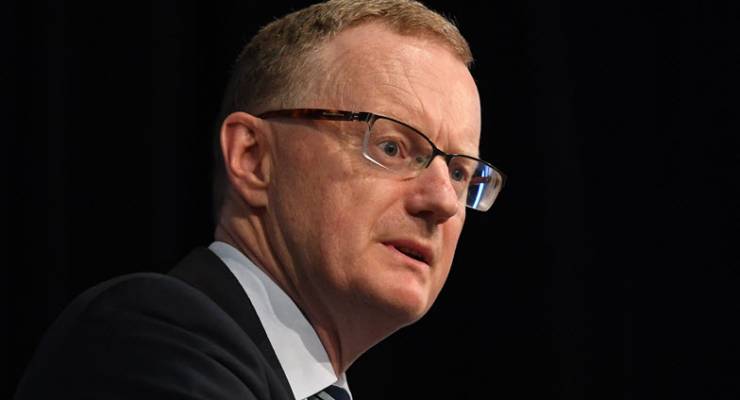
11.30am on June 3, 2009 was a key moment in Australia’s response to the financial crisis. That was when the national accounts for the March 2009 quarter were released, which would reveal whether Australia had tipped into recession after GDP had fallen 0.5% in the December 2008 quarter.
At 11.30, the ABS revealed surprise growth of 0.4% (a number later revised up to an impressive 1%). Kevin Rudd and Wayne Swan’s first stimulus package had saved Australia from recession, to the visible chagrin of then-opposition leader Malcolm Turnbull.
Since then the Coalition, News Corp, The Australian Financial Review and right-wing economists have tried to claim it was anything but fiscal stimulus that saved the economy. But the facts, stubbornly, remain.
Yesterday, 11.30am saw the ABS reveal a 0.4% GDP result for the September quarter. It, too, is a stubborn fact, in a different way.
The government and its media cheerleaders have long insisted that Scott Morrison’s tax cuts would provide economic stimulus — some febrile journalists even compared them to a 2008-style Rudd cash splash. Retail sales figures have repeatedly shown that if anything consumers are spending less in the wake of the tax cuts.
Yesterday confirmed it. Worried households put the tax cuts straight into the bank, lifting the household savings ratio to 4.8: “The reduction to tax payable did not translate to a rise in discretionary spending, which led to a visible impact to household saving,” the ABS’ chief economist noted.
Far from celebrating a “cash splash”, households remain bunkered down: spending rose just 0.1%, understandable given wages growth actually declined in the quarter. Spending on discretionary goods and services fell 0.3%. Those sort of numbers haven’t been seen since a decade ago.
As for the Reserve Bank’s “gentle turning point”, it was a gentle turning point down. Growth was 0.6% in the June quarter (revised upwards from 0.5%) and 0.5% in the March quarter. Only upward revisions of previous quarters “propelled” the annual GDP result to a mighty 1.7%.
The Coalition and its cheerleaders tried to spin the result as a great achievement — a repeat, if you like, of June 2009. Treasurer Josh Frydenberg claimed the result showed the economy was “back on track”. The Financial Review initially trumpeted the result too, before reality kicked in as business groups, including the BCA, began lamenting the outcome.
The economy only has two things going for it: a strong run of commodity prices that helped deliver the first consecutive current account surpluses in nearly fifty years, and continuing strong government spending — on infrastructure by NSW and Victoria, and on the NDIS by the Commonwealth. Both contributed a total of 0.2% each to the final growth figure.
But all those exports aren’t flowing through into the real economy anyway. State final demand in Western Australia, the centre of the current boomlet in mining investment and mining profits, fell 0.2%, the only state other than South Australia where demand shrank. Exports can pump up a GDP result (and government coffers), while doing nothing for ordinary households.
Commodity prices have since come off their peak by around 10% as well, but at least government spending should continue to prop up a crippled economy. Reserve Bank governor Philip Lowe also appears to be betting on rising property prices to lift the economy. The previous round of interest rate cuts, Lowe said on Tuesday in announcing that rates would stay on hold, “boosted asset prices, which in time should lead to increased spending, including on residential construction … Lower mortgage rates are also boosting aggregate household disposable income, which, in time, will boost household spending.”
In other words, the RBA is placing its hopes on the re-emergence of the magic pudding-like wealth effect as people start getting more confident and sentiment improves as their house prices rise.
What’s not said is that this needs to happen while workers are given wage rises barely above inflation. Nor is it mentioned that young people and low-income earners pay the price for economic-management-by-property-bubble, with declining affordability locking even more people out of the housing market.
Nor is there any sign of a wealth effect yet — new car sales figures out yesterday showed sales falling a whopping 9.8% in November compared to a year ago — extending the decline in new vehicle sales to 20 straight months. Today’s retail sales figures for November showed no growth at all in November, well below expectations — indeed, the seasonally adjusted turnover fell slightly from October.
And remember, the federal government is now starting to take money out of the economy, with its budget surplus and refusal to return more than a fraction of bracket creep to hard-pressed households.
We’re on track, all right — on a road to nowhere.
What will it take for the Coalition to wake up to the state of the economy? Let us know your thoughts at boss@crikey.com.au. Please include your full name to be considered for publication.









Crikey is committed to hosting lively discussions. Help us keep the conversation useful, interesting and welcoming. We aim to publish comments quickly in the interest of promoting robust conversation, but we’re a small team and we deploy filters to protect against legal risk. Occasionally your comment may be held up while we review, but we’re working as fast as we can to keep the conversation rolling.
The Crikey comment section is members-only content. Please subscribe to leave a comment.
The Crikey comment section is members-only content. Please login to leave a comment.